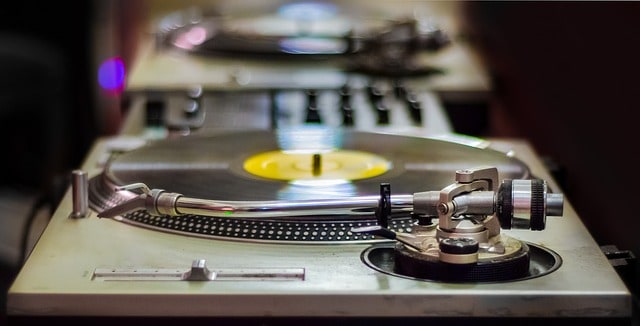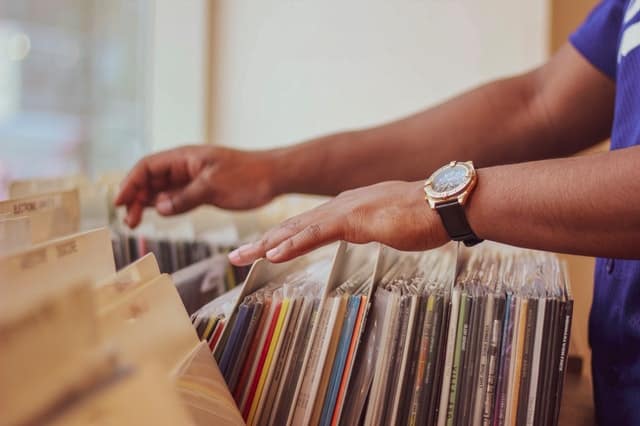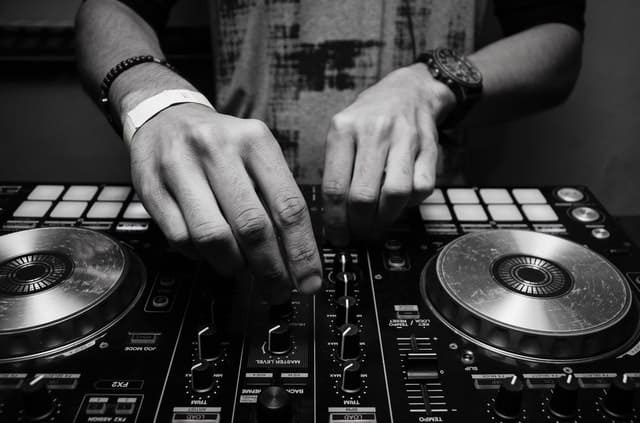When people are talking/writing about DJs or similar subjects, then there are three words pretty popular, which are DJ mix, DJ mix set, and DJ set. Also, these words do all mean the same thing, and this post explains that meaning.
What is a DJ mix (DJ mix set)? A sequence of songs (tracks) that are typically mixed by a DJ so that the result appears as one continuous track.
First, this post explains more comprehensive what a DJ mix is. After that, the popularity of electronic dance music mixes, and then how to make such mixes. At last, this post explains some places where we can listen to DJ mixes.
DJ Mix
When someone is at a festival, a club, or something similar, and there is a DJ playing, then it is almost 100% sure that the person heard a DJ mix. Such mixes sound almost always like one continuous track.
A DJ makes a continuous sounding track by mixing a track to another track. Therefore, we can see mixing most of the time as smoothly switching from one track to another.
A DJ creates DJ mixes with equipment that can play at least two sound sources at the same time. Playing at least two sound sources is necessary else it is not possible to switch from one track to another. Furthermore, a DJ mixer is almost always part of such equipment.
With a DJ mixer, a DJ can blend (mix) two sounds (such as tracks) from sound sources together. By mixing completely from one track to another, then a track changed completely to another track.
Some well-known sound sources are:
- Turntable
- CD player
- Computer sound card
- Digital audio player
The most classic sound source is the turntable. A turntable is the first DJ equipment ever that allowed a DJ to mix from one track to another.

Many DJs like to record their mixes so that people can also listen to the recorded mix, and the DJ can reach than a bigger audience by sharing the mix.
There are also DJs that pre-record their mixes before they play for a live audience. Afterward, they play the recorded mix before the live audience, which has, of course, nothing to do with DJing.
The Popularity of Electronic Dance Music Mixes
The most commonly DJ mixes are the electronic dance music (EDM) ones.
EDM came to America and Europe around the mid-1980s. In the late 1980s and early 1990s, many people categorized such music as “drug music.” One of the reasons for such categorization was that scene had a reputation with drugs. The scene included raves and clubs where drugs were relatively common.
Regardless, the EDM community has hugely grown, and we see this community almost all over the world. The community is especially visible at some extravagant EDM festivals. Festivals such as the yearly Electric Daisy Carnival (EDC) festival in Las Vegas.
While EDM is great to listen to, it is designed more for dancing. In most EDM tracks is the bass drum (kick) or the bassline the most important element of a track. These two elements are also the elements on which we can dance.
There are many EDM genres, and some of the more popular genres are House music, Techno, and Trance music.
These days probably most people have heard some EDM in their life, even if they don’t know what EDM is. Moreover, everyone can enjoy EDM (but not everyone does), and demographics or something else probably never matter.
Making a Good EDM Mix
A DJ mix set can last anywhere from one hour or much longer (5 hours or more), which most of the time depends on the event. To play such long mixes, a DJ has to play many tracks.
For a DJ to choose the right tracks, he/she tries to base that on five things, which are:
- The audience did probably not hear it before at the same event.
- Type of event/party/situation
- The energy level of the audience
- The track next track is harmonically mixable with the current track
- The preference of the DJ
I have ordered the five things based on importance their when choosing the next track. So, the first one is the most important and the last one is the least important.
The most important thing when choosing a new track is not to choose a track that the audience already heard at the same event. Therefore, a DJ should not play two times or more the same track in the same DJ mix. Also, he or she should try not to play a track in the mix that some other DJ played before him at the same event.
Of course, a DJ can not always know what the audience heard at the same event, especially at long events, such as 12 hour long festivals.
The type of event/party/situation is the second most important when a DJ chooses a track. Therefore, a DJ should only play tracks that fit the event/party/situation. For example, it is probably not a good idea to play a hip hop song at a deep house party.
A DJ has to pick a track with the right energy level that matches the energy level of the audience. The DJ has to determine the energy level of the audience by picking up signs of the audience.
The tempo of the track in beats per minute (BPM) is part of the energy level.
A DJ has a list of the tracks that match the type of event/party/situation and the energy level of the audience. Then he or she should try to narrow that list even further down to only tracks that are harmonically mixable with the current track.
If there are no tracks harmonically mixable, then this is not a problem, since it is not a requirement. However, harmonically mix a track to another track can sound good.
We can harmonically mix a track with another track by using the Camelot Wheel. However, there is software that can help you with harmonically mixing, such as mixing in key, which I don’t explain here.
The Camelot Wheel is an image with musical keys on it, which is easy to find by using Google. This image shows us wich keys sound harmonic with each other.
When we want to mix a song with another song harmonically, then have to know the key of the current song. We can find almost always the current key of a song by searching on Google the name of the song with “key” behind the song name. Alternatively, many DJ software like Traktor Pro can also show the key of a song.
When we know the current musical key of a song, then we can find this key in the Camelot Wheel. Then the keys in the image left, and right from the found the key sound harmonically with the found key. Also, the key in the image below or above the found key sound harmonically.
At last, a DJ can choose a track with his or her personal preference. However, the DJ should only make such a choice when there are two or more remaining tracks that:
- The audience did not hear before at the same event.
- Match the energy level of the audience.
- Harmonically mixable, but this is a nice to have (not a must).

Quality of the Tracks
While making a DJ mix, we do the track selection correct, and we do the mixing of the tracks correct, then it is possible to end with a bad DJ mix. It is possible by choosing tracks that are of low quality.
The source of a track determines the quality. Furthermore, it is good to know that many people like to talk about the quality of a track in the way how much they like it. However, they use the word wrong, and they probably mean the word “preference” instead.
Some poor sources that result almost always in a bad track quality are:
- Illegal ripping the audio of a video since the audio quality in the video determines the quality of the ripped track. The audio quality in a video sounds a lot of the time better than it is.
- Recording something with a microphone can result in also recording the sounds of the environment. Alternatively, we can hear that someone recorded the track with a microphone (like the added reverberation).
- Illegal downloading of tracks, since knowing the source of the downloaded is not always possible
- Using a track form an unprofessional producer, since he/she maybe does not have the skills to make the track sound good on many speakers.
Of course, there are also good sources by which we can get tracks. As far as I know, these sources are always stores where we can buy music. Two of such stores are Beatport and Traxsource.
Some Places to Listen to Good DJ Mixes
By listening to good a DJ mix can be fun, and we can sometimes learn from it. When we listen to such mixes, we can discover tracks, and when we have some knowledge/experience with DJ mixes, then we can hear also mixing techniques.
There are many online places where we can listen to good DJ mixes. However, three of such places are probably to most popular, which are YouTube, SoundCloud, and Mixcloud.
For the people that don’t know these three places, we can make use them with a search query. For example, we can search “deep house mix,” which results in many found deep house mixes.
YouTube is probably the most popular of the mentioned three. We can watch videos about DJ mixes on YouTube.
Some of these videos are almost only sound and maybe with a static image, which can be useful. However, in some of these video’s we can see also the DJ performing, which can (not always) be more helpful for that reason.
SoundCloud and Mixcloud are similar and great, and we can listen to audio on both places, such as DJ mixes. Mixcloud is more specialized in such mixes, but we can find them also on SoundCloud.

